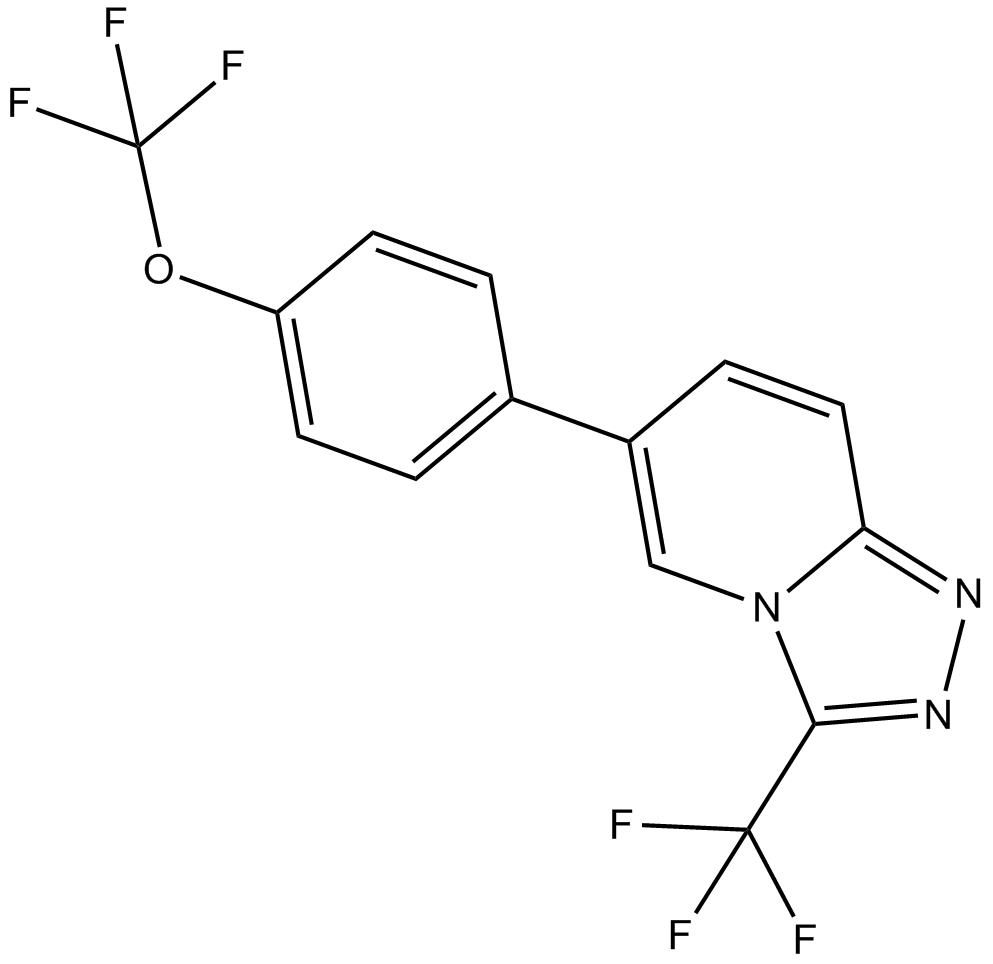GS967 |
| Catalog No.GC10830 |
inhibitor of cardiac late sodium current
Products are for research use only. Not for human use. We do not sell to patients.

Cas No.: 1262618-39-2
Sample solution is provided at 25 µL, 10mM.
GS967 is a potent, selective and novel inhibitor of cardiac late sodium current (late INa) with IC50=0.13 μM in ventricular myocytes and IC50=0.21μM in isolated hearts. [1]
When Na+ channels in myocytes fail to inactivate after opening, Na+ influx continues throughout the AP plateau. The resulting Na+ current (INa) is referred to as late INa. Its magnitude is increased in many pathologic conditions, such as in the failing and/or ischemic heart, in the heart exposed to oxidative stress, and in hearts of patients with congenital long QT3 syndromes. [1]
In rabbit isolated ventricular myocytes, inhibition of peak INa by GS967 is in a concentration- and voltage-dependent manner with minimal use-dependent, it also decreases the Na+ and Ca2+ overload. In rabbit-isolated heart, GS967 abolishes TdP Induced by ATX-II or E-4031. [1]
In anesthetized rabbit, GS967 reduces MAPD90 but did not alter cardiac conduction time; it also prevents the Induction of arrhythmic activity and TdP by clofilium and decreases the Incidence of ischemia-Induced arrhythmias. [1]
Reference:
1. Belardinelli L, Liu G, Smith-Maxwell C et al. A novel, potent, and selective inhibitor of
cardiac late sodium current suppresses experimental arrhythmias. J Pharmacol Exp
Ther. 2013 Jan;344(1):23-32.
Average Rating: 5 (Based on Reviews and 15 reference(s) in Google Scholar.)
GLPBIO products are for RESEARCH USE ONLY. Please make sure your review or question is research based.
Required fields are marked with *




















